Best Ruck Runs Workouts for Mental and Physical Endurance
Ruck Runs Workouts are simple and highly effective ways to enhance your physical fitness, strength and mental toughness.
What is Rucking?
RUCK•ING [VERB] // Walking with a weighted rucksack (aka backpack).
The term Rucking comes from the army. To Ruck simply means to wear a backpack, loaded with weight, and walk.
Ruck Runs follow the exact same principle, except that you run rather than walk.
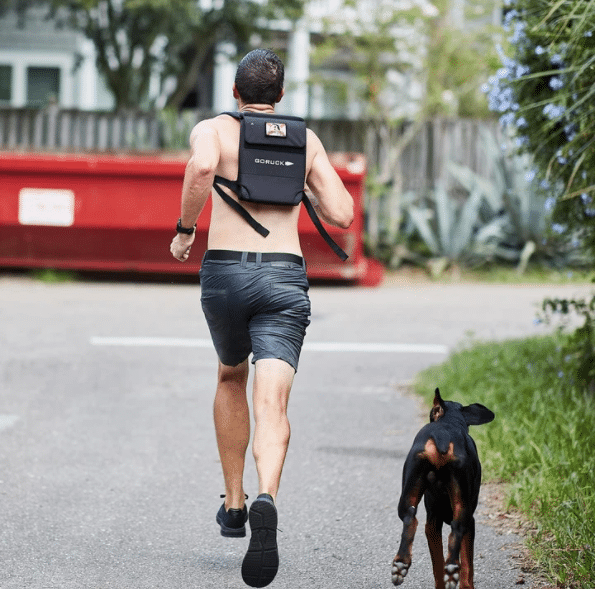
- What is Rucking?
- Benefits of Ruck Runs
- Ruck Runs are Functional
- What Equipment do you Need for Ruck Runs?
- Ruck Runs Develop Skills that are Highly Transferrable
- Ruck Runs Make Every Step Count
- Ruck Runs Enhance your Body
- Ruck Runs Improve Your Posture
- Ruck Runs are easy to scale for your ability level
- Are Ruck Runs good for you?
Benefits of Ruck Runs
Ruck Runs build strength, endurance and character. There are many solid reasons why they are so popular as a functional exercise in the army.
Ruck Runs are Functional
Walking and running with a load is one of the simplest and most ancient and functional forms of human movement.
Your body has been honed over million years of evolution to move in an incredibly effective way, ruck runs follow this tradition and will accentuate your physical and mental capabilities to both complete and endure these tasks.
What Equipment do you Need for Ruck Runs?
Check out GoRuck for everything that you will need.
Ruck Runs Develop Skills that are Highly Transferrable
Improving your general physical preparedness will have huge crossovers for other sports and outdoor fitness activities. Ruck Runs make you better at trail running because your body gets used to additional weight. Remove that weight and everything will feel lighter, faster and easier.
They are also a simple way to develop mental toughness and character. Ruck Runs are not easy. Running up a hill with weight on your back is hard. Your mind must help you to never give in.
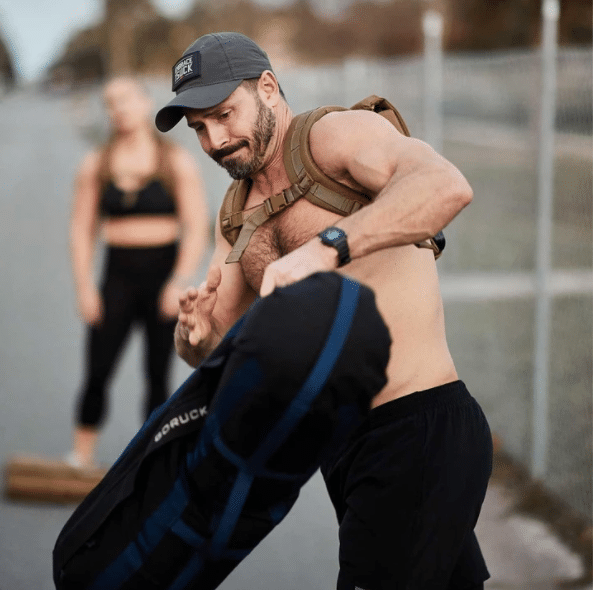
Our minds get stronger and more resilient by enduring difficultly and overcoming it, coupled with intelligent reasoning. Ruck Runs are a perfect physical manifestation of this process.
As Charles Bukowski said, it’s about “how well you walk through the fire”. Ruck Runs will significantly help you to get comfortable with the uncomfortable and enhance your mental resilience.
Ruck Runs Make Every Step Count
Rucking makes the volume of your daily movement count for more, because the movement is made more challenging by the additional weight.
This additional physical stress to your body forces it to adapt and grow stronger, the same principle as lifting progressively heavier weights over time in the gym in order to get stronger.
Ruck Runs Enhance your Body
Ruck Running will develop your quads, hamstrings, calves, glutes, core and back.
They will enhance your core’s ability to stabilise movement and weight over different and unusual landscapes. Ruck Running is also an excellent way to develop your capacity to endure muscular fatigue, which can then transfer over to leg focused exercises over higher rep ranges such as squats and walking lunges.
Ruck Runs Improve Your Posture
Do you stare down at a screen all day? When you put a weight in a backpack, that weight helps to pull your shoulders back and bring your centre of mass over the hips. Good posture is foundational to good movement. Rucking helps you achieve both.
Ruck Runs are easy to scale for your ability level
It doesn’t matter how fit you are when it comes to Ruck Runs, the exercise can be scaled to suit your ability level. Simply lower or raise the amount of weight in your backpack. Then decide whether you want to run or walk.
Are Ruck Runs good for you?
The simple answer is yes. But make sure to tighten the rucksack so that it is high on your back with the straps tight.
You don’t want the load to bounce around inside your pack as this can be annoying when you move. Try packing the objects in t shirts or other clothing in order to hold them more securely in place.
There are also specially designed packs for the singular purpose of rucking if you want to use this type of equipment.
WORKOUT 1
Ruck Trail Run
Wear a pack, choose a trail that you have never run before. Go and run it.
Your score is the total time it took to complete the trail.
WORKOUT 2
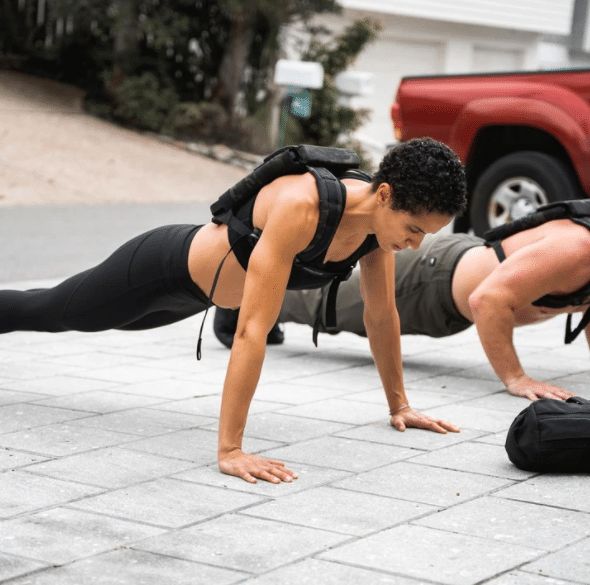
For Time
Buy-In:
- 60 Pull-Ups
- 70 Push-Ups
- 80 Air Squats
- 90 Sit-Ups
- 100 Burpees
Then complete:
- 3 mile Ruck Run (55/35 lb)
With a running clock, complete the buy-in before proceeding with the 3 mile Ruck Run.
Score is the time on the clock when the 3rd mile is completed.
Scaling Options
Intermediate
For Time
Buy-In:
- 60 Pull-Ups
- 70 Hand Release Push-Ups
- 80 Air Squats
- 90 Sit-Ups
- 100 Burpees
Then complete:
- 3 mile Ruck Run (35/25 lb)
Beginner
For Time
Buy-In:
- 60 Pull-Ups
- 70 Hand Release Push-Ups
- 80 Air Squats
- 90 Sit-Ups
- 100 Burpees
Then complete:
- 3 mile Ruck Run (25/15 lb)
WORKOUT 3
For Time
- 400 metre Ruck Run (35/25 lb)
- 101 second Ruck Squat Hold (35/25 lb)
- 400 metre Ruck Run (35/25 lb)
- 50 Ruck Push-Ups (35/25 lb)
- 400 metre Ruck Run (35/25 lb)
- 101 second Plank Hold with Ruck (35/25 lb)
- 400 metre Ruck Run (35/25 lb)
- 101 Burpees
- 400 metre Ruck Run (35/25 lb)
- 101 second Overhead Ruck Hold (35/25 lb)
- 400 metre Ruck Run (35/25 lb)
With a running clock, as fast as possible perform the prescribed work in the order written. Perform the prescribed movements while wearing a Ruck except for Burpees. For the Thrusters and Overhead Hold, athlete will use the Ruck for the weight.
Score is the time on the clock when the last round of 400 metre Ruck Run is completed.
Note: The workout as originally written called for a “Bergen” which is a British army rucksack.
WORKOUT 4
For Distance
40 minute Ruck Run (50/30 lb)
With a Ruck, run as fast as you can for 20 minutes, then return home.
Score is the distance travelled in metres.
WORKOUT 5
15 Rounds for Time
- 2 minute Ruck March (30/20 lb)
- 45 Mountain Climbers (2-count)
- 30 Plank Shoulder Taps (2-count)
- 10 Ruck Thrusters (30/20 lb)
Ruck stays on the whole time except during the Thrusters, when it’s used as the weight.
With a running clock, as fast as possible perform the prescribed work in the order written for 16 rounds. Athlete wears a Ruck (a weighted backpack) through the entire workout, except during the Thrusters, when the Ruck is removed and used as the Thruster weight.
Score is the time on the clock when the last round of the Thrusters is completed.
Movement Standards
Ruck March: While wearing a Ruck, march in place for 2 minutes.
Shoulder Tap: From a Plank Hold position, tap the right shoulder with the right hand and the left shoulder with the left hand. Left + right shoulder tap counts as one rep.
WORKOUT 6
10 Rounds for Time
- 10 Ruck Squats (45/35 lb)
- 10 Ruck Russian Twists (45/35 lb)
- 10 Ruck Push-Ups (45/35 lb)
- 10 Ruck High Pulls (45/35 lb)
Anytime during the 10 Rounds, complete:
- 1 mile Ruck Sandbag Run (45/35 lb, 100/70 lb)
With a running clock, as fast as possible perform the prescribed work in the order written for 10 rounds. Complete the 1 mile Ruck Sandbag Run any time during the 10 rounds.
Score is the time on the clock when the workout is completed.
WORKOUT 7
For Time
- 29 Ball Slams (30/20 lb)
- 29 4-count Mountain Climbers
- 29 4-count Lunges
- 29 Pull-Ups
- 29 4-count Flutter Kicks
- 29 Broad Jumps
- 29 Plank Walk Ups
- 29 Crunches
- 29 Burpees
- 29 Air Squats
- 29 Push-Ups
Then complete:
- 1 mile Ruck Run (20/14 lb)
With a running clock, as fast as possible perform the prescribed work in the order written.
Score is the time on the clock when the 1 mile Ruck Run is completed.
Movement Standards
Plank Walk Up: From a full Plank Hold position, move from using both hands for support to both the elbows. From the Elbow Plank Hold, move back to the full Plank Hold position. This counts as one rep.
Crunch: Lay with the back flat on the ground. Place the feet below the hips so the knees are perpendicular to the ground. Keep the feet planted while you lift your upper torso towards the knees at a 45 degree angle, almost doing a Sit-Up. Come back to the starting position to count as 1 rep.
PARTNER WORKOUT 8
For Time (with a Partner)
- 100 No Push-Up Ruck Burpees (30/20 lb)
Then, 2 Rounds of:
- 24 Ruck Swings (30/20 lb)
- 64 Push-Ups
- 24 Ruck Squats (30/20 lb)
- 64 Sit-Ups
With a running clock, as fast as possible perform the prescribed work in the order written. Each partner will do half the reps, but they can be split up however you choose with one person working at a time.
Score is the time on the clock when the last round of Sit-Ups is completed.
Movement Standards
No Push-Up Burpee: This is a standard Burpee without the Push-Ups.
Ruck Swing: This is a standard Kettlebell Swing but instead of using a Kettlebell, athletes will use the Ruck.
Ruck Squat: This is a standard Air Squat while wearing a Ruck.
PARTNER WORKOUT 9
For Time (with a Partner)
Buy-In:
- 400 metre Partner Carry (switch as needed)
Directly into:
- 300 Ruck Swings (30/20 lb)
- 200 Sit-Ups
- 200 Ruck Lunges (30/20 lb)
- 200 Ruck Overhead Shoulder Press (30/20 lb)
Buy-Out:
- 400 metre Partner Carry (switch as needed)
With a running clock, as fast as possible perform the prescribed work in the order written. Switch as needed in the Partner Carry. Split the reps however you choose with one person working at a time.
Score is the time on the clock when the buy-out of 400 metre Partner Carry is completed.
PARTNER WORKOUT 10
For Time (with a Partner)
Partner A:
- 400 metre Ruck Run (30/20 lb)
Partner B while the other Runs:
- Max Ruck Squats (30/20 lb)
- Max Ruck Plank Hold (30/20 lb)
- Max Ruck Lunges (30/20 lb)
- Max Flutter Kicks
Finally, perform:
- 1 mile Ruck Run (30/20 lb, together)
While Partner A runs 400 metres, Partner B will perform max repetitions of the specified movement per station. Once the Run is completed, athletes will switch and move to the next station.
With a running clock, as fast as possible perform the prescribed work in the order written with a partner.
While Partner A runs 400 metres, Partner B will perform max repetitions of the specified movement per station. Once the Run is completed, athletes will switch and move to the next station. To complete the workout, athlete must perform the 1 mile Ruck Run together. Both athletes can wear a Ruck or switch the Ruck but they must finish as a team.
Score is the time on the clock when the 1 mile Ruck Run is completed.
PARTNER WORKOUT 11
For Time (with a Partner)
- 3 mile Ruck Run (30/20 lb, together)
Then, 3 Rounds of:
- 50 metre Sprint / Static Ruck Hold Overhead (30/20 lb)
- 100 metre Sprint / Static Ruck Hold Overhead (30/20 lb)
With a running clock, as fast as possible perform the prescribed work in the order written with a partner.
Both athletes must run together the 3 miles while wearing their Rucks. Then, Partner A will do the 50 metre Sprint while Partner B will hold the Ruck overhead.
Once Partner A comes back from the Sprint, Partner B will do the 50 metre Sprint and Partner A will hold the Ruck overhead. Same goes for the 100 metre Sprint. Repeat the sequence 3 times.
Score is the time on the clock when the last Sprint is completed.
Enjoyed these Ruck Runs Workouts? Try these Broad or Tuck Jump Workouts.

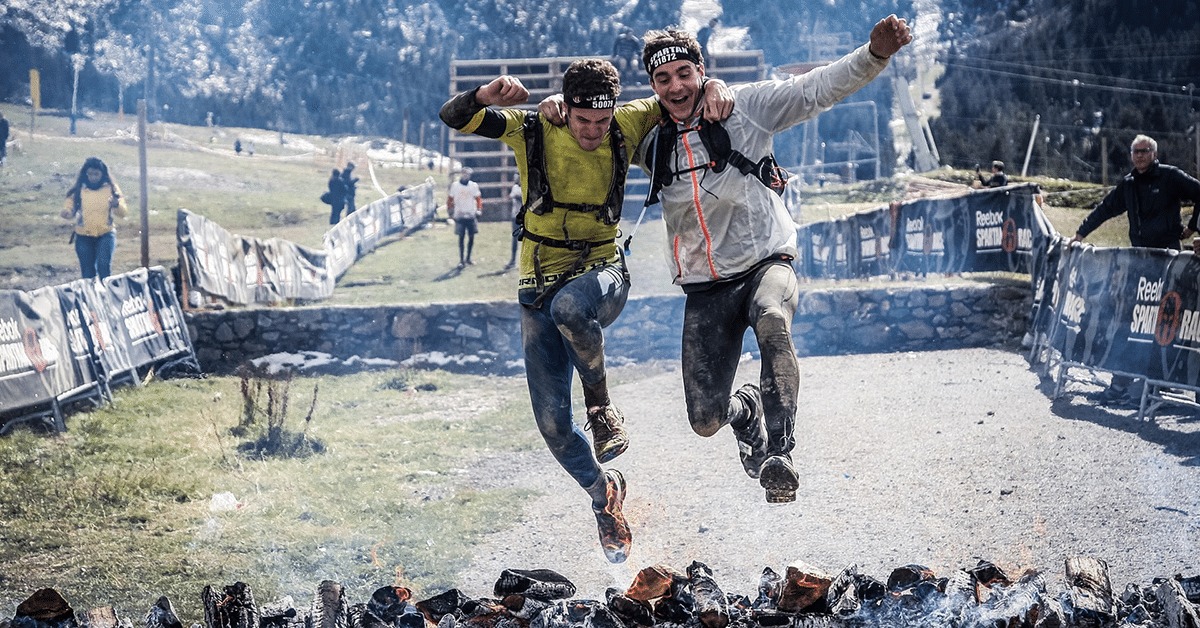
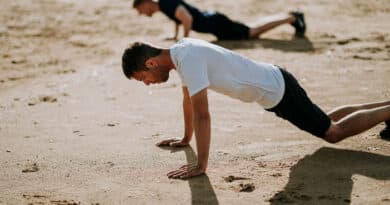


Comments are closed.